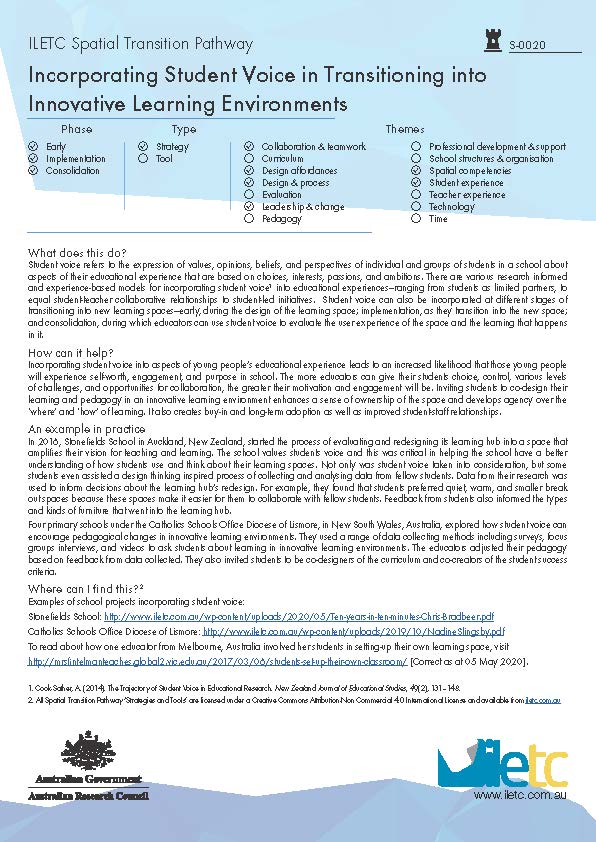| Introduction | Wayfinding activity | Spatial typologies | Spatial transition case studies | Spatial transition resources |
Spatial Transition Pathway
The Spatial Transition Pathway provides a framework for the strategies and tools which support teachers to make the journey of change into innovative learning environments. Strategy is defined as an explicit concept, theory or practice that enhances teachers’ use of innovative learning environments. A tool is an identifiable activity or protocol, that implements a strategy. You can use the database to search for strategies and tools by temporal phase or transition theme(s). If you would like to contribute a strategy or tool, please contact the ILETC team.
Incorporating Student Voice in Transitioning into Innovative Learning Environments
Student voice refers to the expression of values, opinions, beliefs, and perspectives of individual and groups of students in a school about aspects of their educational experience that are based on choices, interests, passions, and ambitions. There are various research informed and experience-based models for incorporating student voice1 into educational experiences—ranging from students as limited partners, to equal student-teacher collaborative relationships to student-led initiatives. Student voice can also be incorporated at different stages of transitioning into new learning spaces—early, during the design of the learning space; implementation, as they transition into the new space; and consolidation, during which educators can use student voice to evaluate the user experience of the space and the learning that happens in it.

